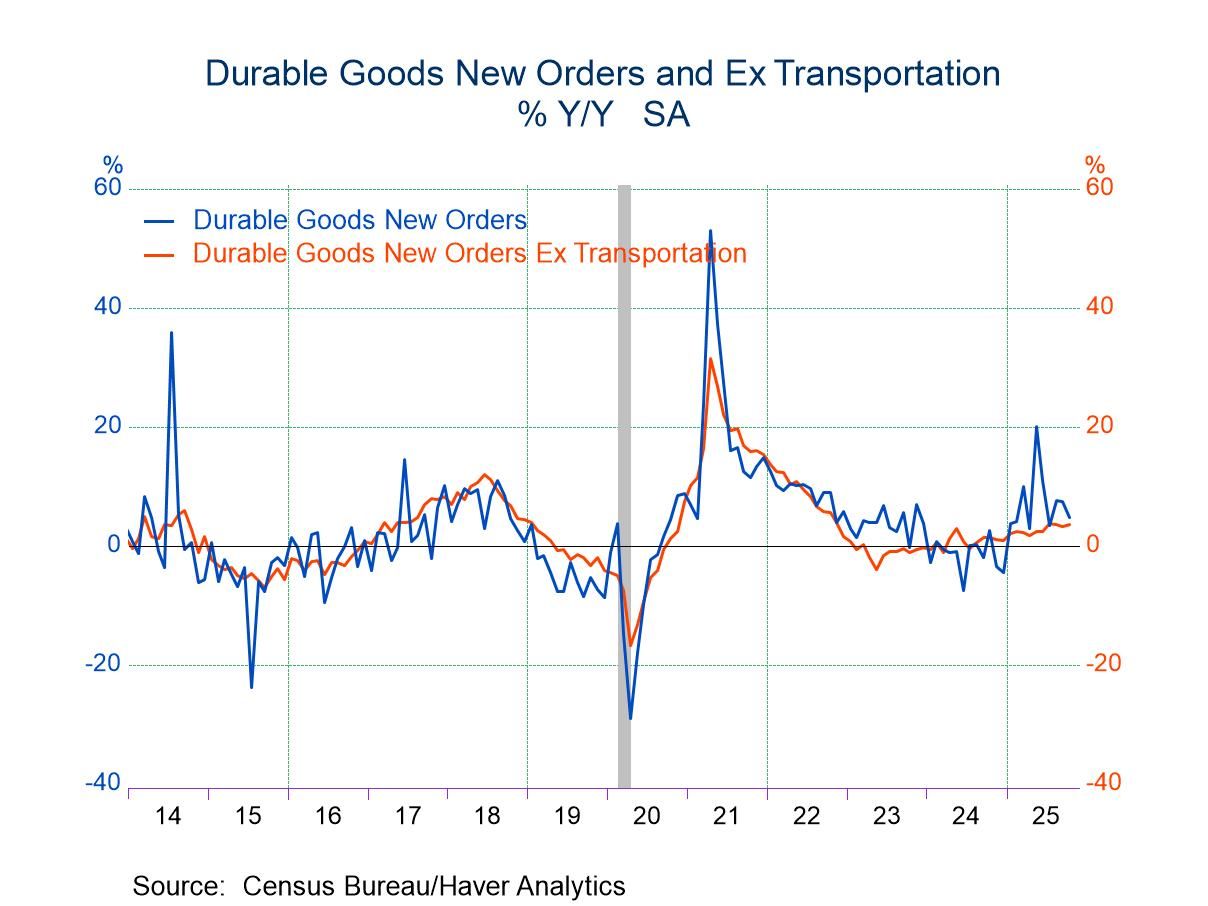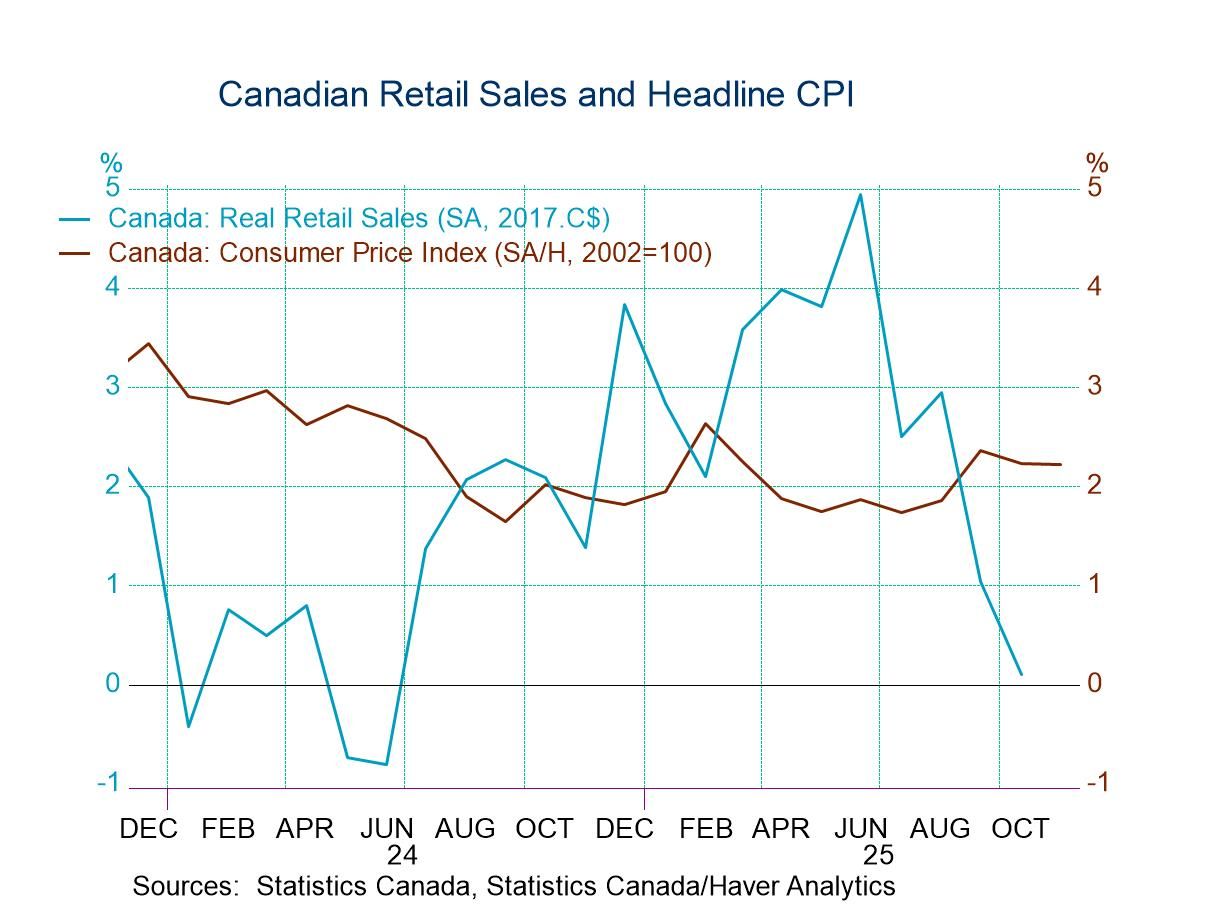U.S. Construction Spending Remains Solid in November
by:Tom Moeller
|in:Economy in Brief
Summary
- Gain is slightly less-than-expected.
- Residential building strengthens but business outlays ease.
- Public sector construction slips following earlier strength.


The Census Bureau reported that the value of construction put-in-place rose 0.4% (9.3% y/y) during November following a 0.4% October increase, revised from 0.2%. A 0.7% November gain had been expected in the Action Economics Forecast Survey. September's change was revised to +1.0% from -0.1%.
Private construction rose 0.6% (12.5% y/y) in November after a 0.1% uptick. Residential private construction improved 0.9% (+16.3% y/y) after slipping 0.2% in October. Single-family building rose 1.2% (19.4% y/y) after easing in two of the prior three months. Multi-family building slipped 0.3% (+9.6% y/y) after holding steady in October. Home improvement expenditures rose 0.9% (14.4% y/y) in November after little change in the prior month.
Nonresidential private construction improved 0.1% (6.7% y/y) in November after firm gains in each of the prior four months. Transportation spending surged 4.4% (0.3% y/y), the strongest increase in six months. Office building was little-changed (2.9% y/y) after a 0.4% rise and communication construction grew 0.3% (1.5% y/y) after strengthening 1.1% in October. To the downside, heath care construction fell 1.2% (+5.2% y/y) after two consecutive 0.7% increases. Educational construction fell 0.6% (-5.2% y/y) and fully reversed the prior month's gain. Manufacturing construction grew 0.9% (22.4% y/y) following even stronger increases in each of the prior three months. Power building improved 0.1% (7.5% y/y) after rising 0.4% in October.
The value of public construction weakened 0.2% (-0.9% y/y) in November after surging 1.5% in the prior month. Power construction rose 1.3% (50.1% y/y) following a 5.6% surge. Spending on highways and streets weakened 0.8% (+0.2% y/y) after strengthening 1.7% in October. Residential construction declined 2.8% (-3.0% y/y) and reversed the prior month's increase. Health care building fell 1.2% (+13.8% y/y) following a 2.9% surge. Spending on educational buildings improved 0.3% (-6.3% y/y) following no change in October. Transportation building fell 0.5% (+0.7% y/y) after strengthening 2.8% in October.
The construction spending figures, some of which date back to 1946, can be found in Haver's USECON database. The expectations reading is in the AS1REPNA database.
What's Holding Back Employment in the Recovery from the COVID-19 Pandemic? from the Federal Reserve Bank of Cleveland can be found here.


Tom Moeller
AuthorMore in Author Profile »Prior to joining Haver Analytics in 2000, Mr. Moeller worked as the Economist at Chancellor Capital Management from 1985 to 1999. There, he developed comprehensive economic forecasts and interpreted economic data for equity and fixed income portfolio managers. Also at Chancellor, Mr. Moeller worked as an equity analyst and was responsible for researching and rating companies in the economically sensitive automobile and housing industries for investment in Chancellor’s equity portfolio. Prior to joining Chancellor, Mr. Moeller was an Economist at Citibank from 1979 to 1984. He also analyzed pricing behavior in the metals industry for the Council on Wage and Price Stability in Washington, D.C. In 1999, Mr. Moeller received the award for most accurate forecast from the Forecasters' Club of New York. From 1990 to 1992 he was President of the New York Association for Business Economists. Mr. Moeller earned an M.B.A. in Finance from Fordham University, where he graduated in 1987. He holds a Bachelor of Arts in Economics from George Washington University.






